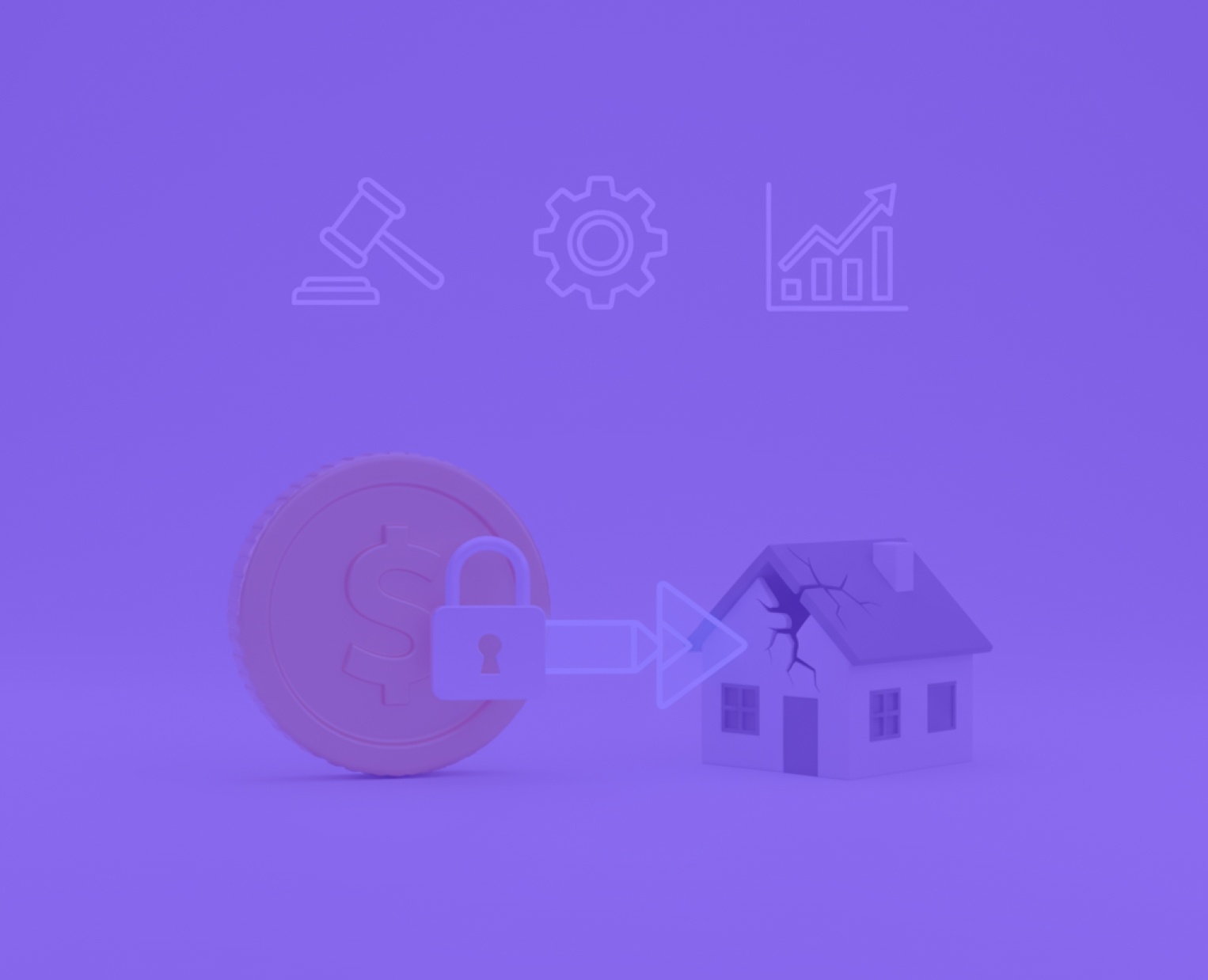Mortgage Company Insurance Claim Checks: 2025 Trends, Regulations & Digital Solutions
Introduction: The Rising Stakes of Mortgage Company Insurance Claim Checks in 2025
By next year at this time, the average homeowner or contractor waiting on a mortgage company insurance claim check will have spent over 44 days in limbo—often with repairs stalled and tempers fraying. This isn’t just anecdotal: J.D. Power’s 2025 U.S. Property Claims Satisfaction Study found that claim cycle times now average 32.4 days, but final payments frequently stretch well beyond 44 days, fueling widespread frustration and dissatisfaction among policyholders and service providers alike (J.D. Power) (2).
What’s driving these delays? A potent mix of regulatory scrutiny, risk management protocols, and the slow churn of legacy processes. As we look ahead, new regulations, emerging technologies, and digital payment solutions are converging to reshape the landscape. This blog explores what’s changing, why it matters, and how professionals can adapt for a smoother, faster claims experience in 2025.
Why Are Mortgage Company Insurance Claim Check Holds Reaching 44+ Days?
The root causes of extended insurance claim check holds are as tangled as a contractor’s extension cord. Documentation requirements have grown more complex, with mortgage companies demanding detailed repair estimates, signed contracts, and proof of loss before even considering a check endorsement (Property Insurance Coverage Law) (1). Staged disbursements—where funds are released in increments as repairs progress—add further layers of inspection and approval, often resulting in multiple site visits and paperwork cycles (iink) (5).
Communication breakdowns between homeowners, contractors, and mortgage servicers are another common culprit. Even when state laws and mortgage agreements set minimum standards for timelines, practical realities often lead to much longer waits. For example, while a state may require funds to be released within 10 days of receiving proper documentation, servicers typically hold onto the money until repairs are verified as complete—regardless of statutory deadlines (Fannie Mae Servicing Guide) (3).
It’s not just about paperwork. Risk controls are a major factor: lenders want to ensure that repairs are completed to protect their collateral. This means that even minor errors or missing documents can trigger significant delays. In some cases, a single missing signature can set the process back by weeks. If you’ve ever felt like you’re starring in a never-ending episode of “Where’s My Check?”, you’re not alone.
Table 1: Common Delay Points in the Insurance Claim Check Process
| Delay Point | Typical Duration | Main Cause |
|---|---|---|
| Documentation Submission | 7–10 days | Incomplete paperwork |
| Initial Inspection | 5–7 days | Scheduling, inspector availability |
| First Disbursement | 1–2 weeks | Risk review, staged release |
| Subsequent Inspections | 1–2 weeks each | Repair verification |
| Final Payment | 2–3 weeks | Final approval, check processing |
| Source: J.D. Power (2), Property Insurance Coverage Law (1), iink (5) |
2025 Regulatory Requirements: How New Rules Are Reshaping Claim Disbursement
Regulatory changes in 2025 are raising the bar for mortgage company insurance claim check processing. States like Texas now mandate a 10-day notification and release timeline, with annual interest penalties of 10% for delays (Property Insurance Coverage Law) (1), (iink) (5). California, meanwhile, imposes its own interest penalties for late payments and requires clear, documented communication between all parties (UPHelp) (8).
On the federal side, the Fannie Mae Servicing Guide’s 2025 update requires servicers to follow strict inspection and escrow procedures before releasing any insurance proceeds. This includes mandatory documentation, staged disbursements, and final repair verification (Fannie Mae Servicing Guide) (3).
Non-compliance isn’t just a slap on the wrist anymore. Penalties can include financial sanctions, increased regulatory scrutiny, and—perhaps most importantly—damage to a servicer’s reputation. The message is clear: transparency, timely communication, and rigorous documentation are now non-negotiable.
Table 2: Key 2025 Regulatory Requirements by State
| State | Notification Timeline | Penalty for Delay | Special Requirements |
|---|---|---|---|
| Texas | 10 days | 10% annual interest | Written notice to homeowner |
| California | “Prompt” (varies) | Statutory interest | Detailed communication |
| National | Fannie Mae: varies | Escrow, inspections | Staged disbursements |
| Source: Property Insurance Coverage Law (1), UPHelp (8), Fannie Mae Servicing Guide (3) |
The Step-by-Step Claim Payment Process: Where Delays Happen
Let’s walk through a typical insurance claim payment journey:
-
Check Endorsement: The insurance company issues a claim check payable to both the homeowner and the mortgage company. Both parties must endorse the check, which often requires mailing, in-person visits, or digital endorsement platforms (Bankshot) (9).
-
Documentation Submission: Homeowners must provide repair contracts, estimates, and proof of loss. Missing or incomplete paperwork is a leading cause of delay (Property Insurance Coverage Law) (1).
-
Repair Verification: Mortgage companies may require initial and mid-project inspections to verify that repairs are progressing as agreed (iink) (5).
-
Staged Disbursements: Instead of releasing the full amount at once, funds are often disbursed in stages, with each release contingent on passing inspections and submitting updated documentation (Fannie Mae Servicing Guide) (3).
-
Final Inspection and Payment: A final inspection confirms that all repairs are complete, triggering the release of any remaining funds.
The most common delay points? Endorsement and documentation can take 7–10 days, while the first disbursement may require another 1–2 weeks. Subsequent releases depend on inspection milestones, and any hiccup—like a missing receipt or a delayed inspector—can push timelines out by weeks (J.D. Power) (2).
If you’re a homeowner or contractor, here’s a tip: double-check all paperwork before submission, and don’t be shy about following up. Sometimes, a polite nudge is all it takes to move things along. (And if you’re tempted to send cookies to your mortgage servicer, just make sure they’re not the kind that crumble under pressure.)
Emerging Automation: How Technology Is Accelerating Mortgagee Approvals
The mortgagee approval bottleneck has long been the bane of insurance claim processing. But in 2025, automation and digital workflow solutions are finally making a dent. Specialized providers including Bankshot focus on eliminating manual paperwork, enabling real-time document verification, and streamlining staged disbursements (SnapRefund) (6).
Automatic mortgagee approval platforms can reduce approval times from weeks to days by digitizing the entire process. Homeowners and contractors upload required documents, receive instant status updates, and trigger automated notifications for each workflow milestone. No more chasing signatures or wondering if your paperwork is lost in a black hole.
Industry leaders are also adopting digital document management and workflow automation to cut cycle times and reduce errors. According to industry publications, these tools are now considered best practice for modern claims management (Guidewire) (10). And yes, there’s even a dashboard for tracking progress—because nothing says “peace of mind” like watching your claim inch closer to completion in real time.
Digital Payment Solutions: Transforming Claim Disbursement Efficiency
The shift from paper checks to digital payments is one of the most significant trends in insurance claim disbursement for 2025. Real-time payments, ACH transfers, and even blockchain-based solutions are transforming the speed and transparency of the process (OneInc) (7).
Digital payments can reduce processing times from weeks to days, dramatically improving customer satisfaction. For mortgage servicers, embracing these innovations isn’t just about keeping up—it’s about gaining a competitive edge. Customers increasingly expect the same speed and convenience they experience in other areas of their financial lives.
Blockchain solutions, while still emerging, promise secure, transparent, and tamper-proof disbursements. And let’s face it: anything that makes the phrase “the check is in the mail” obsolete deserves a standing ovation.
Best Practices for Mortgage Companies and Homeowners in 2025
To minimize delays and ensure a smoother claims process, both mortgage servicers and homeowners can adopt several best practices:
-
Standardize Workflows: Use digital platforms to automate routine tasks and ensure consistent documentation (Guidewire) (10).
-
Proactive Communication: Regular updates between all parties help prevent misunderstandings and catch missing paperwork early (Property Insurance Coverage Law) (1).
-
Leverage Digital Tools: Homeowners should use digital submission portals where available, keep detailed records, and follow up regularly (iink) (5).
-
Embrace Automation: Mortgage companies should invest in workflow automation and digital document management to reduce errors and speed up approvals (SnapRefund) (6).
-
Stay Informed: Keep up with regulatory changes and ensure compliance to avoid penalties and reputational risk (UPHelp) (8).
And remember: patience is a virtue, but digital transformation is even better. (If only patience could be direct-deposited.)
Conclusion: The Future of Mortgage Company Insurance Claim Checks
The convergence of regulatory pressure, rising customer expectations, and rapid technology innovation is pushing the industry toward faster, more transparent claim check processing in 2025 and beyond. Customer dissatisfaction with slow claim payments is driving mortgage companies to adopt digital and automated solutions at a record pace (J.D. Power) (2), (OneInc) (7).
For professionals in insurance, real estate, and title, the message is clear: adapt to these changes, invest in modern tools, and prioritize proactive communication. The future belongs to those who can deliver speed, transparency, and a seamless experience—no more waiting games required.
References
-
Property Insurance Coverage Law - How Long Can Mortgage Company Hold Insurance Check?
-
iink - Navigating the Property Insurance Claim Payment Process
-
SnapRefund - Automatic Mortgagee Approval in Homeowner’s Insurance Claims
-
Bankshot - How Does a Mortgage Company Endorse an Insurance Check?
Ready to Streamline Your Digital Payments?
Ready to accelerate your insurance claim payments? Discover how Bankshot’s digital solutions can streamline mortgage company approvals and disburse funds faster—contact us for a demo today.










